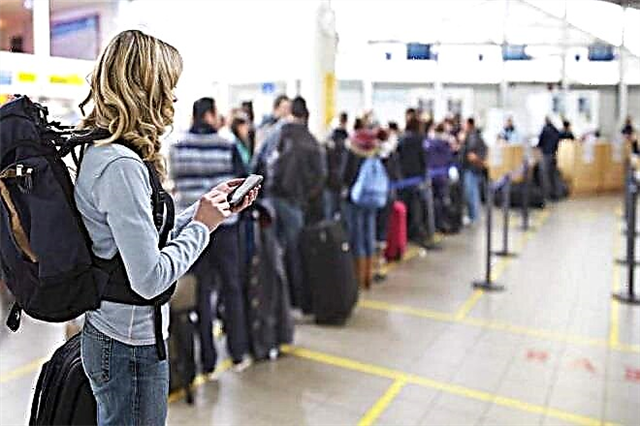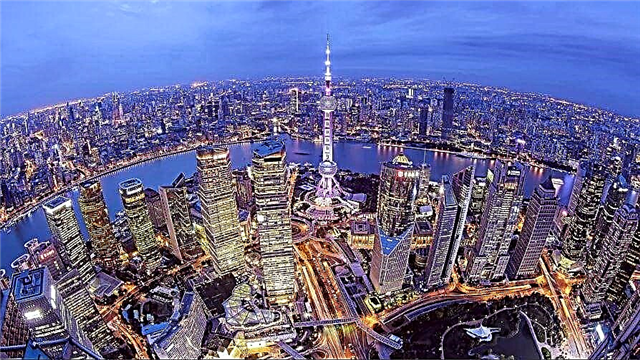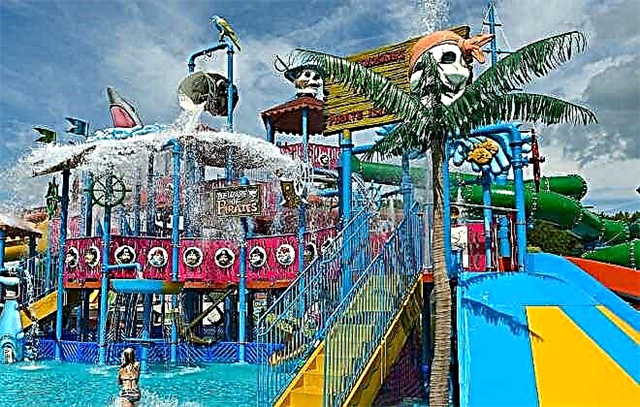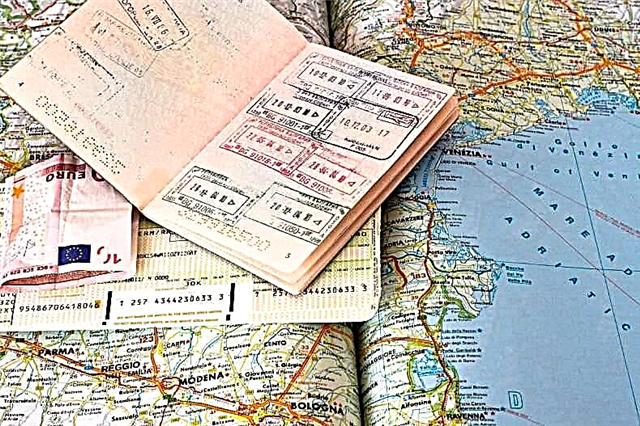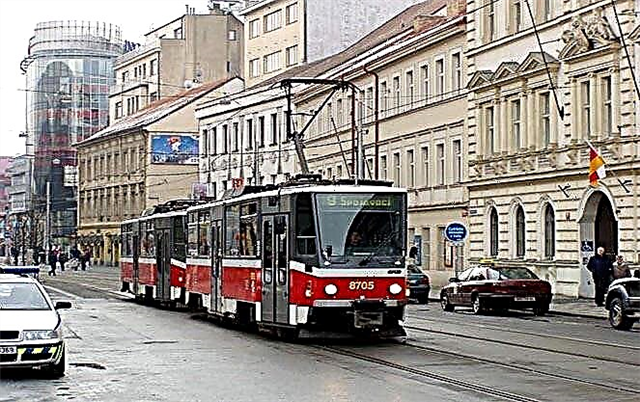The Czech Republic is a picturesque country with many attractions. To get acquainted with them, you will have to constantly move both within cities and between them. Therefore, when planning a trip to this country, you should find out how public transport works in the Czech Republic.

General information about the public transport system in the Czech Republic
Like other EU countries, the Czech Republic has relied on the development of public transport. Currently, the country has an extensive rail network and many urban and intercity bus routes.
Most major cities in the Czech Republic have tram connections, while Prague also has a metro and a cable car. In 2021, after a 45-year hiatus, the trolleybus resumed operation in the capital.
In small towns, such as Karlovy Vary, public transport is mainly represented by buses.
The peculiarity of Czech transport is strict adherence to the schedule.
Some buses and trams continue to operate at night without increasing the fare. The buses are equipped with a STOP button, which makes it possible to stop on demand.
In major cities of the country, including Prague and Brno, a unified urban transport system has been created, which allows using a single ticket for all types of travel. This makes it possible for the traveler not only to save on transport, but also to quickly get to almost any point in the capital of the Czech Republic or another city in the country.
How the Prague metro works
The only metro in the country is located in Prague. It consists of three branches, which are usually called the letters A, B and C. The total length of its lines is about 65 km. The total number of Prague metro stations is 61.
Prague metro map:

The location of the subway stations allows tourists to get to all the most interesting areas of the capital. So, Hradcanska allows you to get to the area of Prague Castle (castle), Staroměstská is located near Charles Bridge and Old Town Square, and from Nádraží Holešovice you can easily reach the famous singing Křižík fountains.
A feature of the Prague metro stations is the huge number of exits. At the same time, due to the fact that most of the stations are not located too deep, escalators are not installed everywhere.
Opening hours of the Prague metro on weekdays and Sundays - from 5.00 to 24.00. On Fridays and Saturdays, its work is extended by an hour - until 01.00.
The interval between train arrivals is from 4 to 10 minutes, and during rush hours it is reduced to 3 minutes.
A half-hour metro ride through the city center will cost you about 25 CZK (about 1 €).
Features of railway communication
All cities in the Czech Republic are connected by rail. At the same time, trains follow strictly according to the schedule, and tickets for them are always on sale.
A feature of Czech railways is that the purchased ticket is not tied to a specific train, but is valid in all trains following the ordered route. This means that the payment you made gives you the right to get off the train at any intermediate point of its movement, get acquainted with the sights and board any next train going in the same direction.

There are three main types of carriages in use in the country: classic compartment and reserved seat cars, as well as common carriages with seats typical of most small European countries.
Through the official website of the České dráhy company, which is available in English and Czech, you can buy tickets for all trains.
One of the most important transport hubs in Prague is the Smichovsky railway station located in the south-west of the capital. Its advantage is the proximity to the metro station and stops of many tram lines.
How buses work in the Czech Republic
The only way to get to famous remote towns such as Karlovy Vary and Cesky Krumlov is by intercity buses. Their routes and timetables are listed on the website. Bus tickets can be bought at bus stations or directly from the driver.
The largest in the country is the Prague bus station Florenc. Buses from here go to almost all cities in the Czech Republic. You can get to the bus station by metro, getting to the Florenc station, using lines B and C.
The bus is cheaper than the train, but it will take longer.
In addition to intercity bus routes, intracity bus routes are also developed. In most cities, most of them are laid out far from the center.
The bus schedule is posted at the stops. There are separate day and night routes. Daytime traffic starts at 04.30 and lasts until 0.00. The interval of movement during the day is usually 10 to 30 minutes.

At 0.30 the night routes start working. It runs at intervals of up to 40 minutes and ends at 4.30.
The best way to get from Prague to Ruzyne airport outside the city is to take bus lines 100 and 119.
How the tram service works
The main way to travel around the major cities of the Czech Republic is by tram. So, in Prague in the daytime trams run on 24 routes with an interval of 4 to 10 minutes. At night, their number is reduced to 9 (and most of the routes do not coincide with the daytime), and the interval of movement increases to 40 minutes.
There are no turnstiles and conductors in Prague trams. Tickets must be bought at the terminal or at various kiosks that can be found almost anywhere in the city.
At the entrance to each car there is a special composter that automatically puts down the date and time of composting.
Almost half of the tram fleet in Prague is made up of somewhat outdated Tatra-T3 coaches, and a quarter is made up of the ultra-modern Škoda 15T. Regardless of the year of manufacture, the technical condition of the trains is usually very good.
Prague tram map combined with metro map:

The timetable for each route is available on the website.
In addition to the usual ones, there are two tram routes in Prague, intended exclusively for tourists. The first of them, No. 23, uses Tatra T3SU tram cars typical of the second half of the 20th century, and it follows from the Královka stop to the Zvonařka stop.
The second route was previously known as number 91, and now it is tourist route number 41. A historic tram, built in 1920, runs along it.
It follows from the Vozovna Střešovice depot, which houses the Prague tram museum. There are many attractions along the tramway, including Prague Castle, Royal Gardens and Republic Square. And its final stop is Výstaviště Holešovice.
Another interesting tram route, number 22, runs past many of Prague's famous beer restaurants, which is why it is called the “beer route”. By the way, you can also enjoy a foamy drink in the former tram depot, converted into a pub, which is now called První Pivní Tramwa. You can get there by trams 11 and 14, getting off at the Spořilov stop.
While enjoying a leisurely and comfortable journey around the capital of the Czech Republic, do not forget about the purchase and validation of tickets - their availability is checked by the controllers who usually walk on the carriages accompanied by police officers.
The fine for travel without a ticket is 800 CZK (32 €), which is 33 times the cost of a half-hour trip.
One and a half hours of travel on the Prague tram will cost 32 kroons (1.33 €), and for 160 kroons (6.67 €) you can ride the whole day.
How the cable car works in the Czech capital
In Prague, there is the only cable car in the whole Czech Republic that connects Petřín Hill and the central part of the city. The route of its movement is from the tram stop Újezd through the Nebozizek park to the top of Petřín Hill. She works throughout the week.
In the period from November to March, its opening hours are from 09.00 to 23.20, in the high season the road works 10 minutes longer - from 09.00 to 23.30.
The length of the route is just over 500 meters.
The funicular has a single Prague pass.
How and where you can buy tickets for public transport
You can buy tickets for all types of transport in Prague at vending machines, kiosks or ticket offices under the sign “Prazska integrovana doprava”. You can find such ticket offices at large tram and bus stops or at metro stations.
Travel tickets come in the following categories:
- short - for 30 minutes of travel in any type of transport, including transfers. Costs 24 CZK (1 €);
- standard - for 90 minutes of travel for 32 kroons (1.33 €);
- for 24 hours - 110 CZK (4.58 €);
- for 72 hours - 310 CZK (12.92 €).
In addition, the following types of passes are available:
- for 30 days - 670 CZK (27.92 €);
- for 90 days - 1880 CZK (78.33 €);
- for 1 year - 6100 CZK (254.16 €).
Unlike regular tickets, passes are available for purchase only at special ticket offices located at metro stations and at the airport.
The main categories of tickets can also be bought by SMS to number 90206. An amount equal to the cost of the selected ticket + the tariff for the message will be debited from the account.
From 2021, ordinary travel cards are being replaced by a plastic card called "litachka". You can buy it at the same ticket offices as the travel passes, while it costs less - a card for a month will cost 550 kroons (22.91 €).
How does a Czech taxi work
As in all civilized countries, the taxi service in the Czech Republic is well developed. At night, when bus intervals increase and the metro closes, taxis become the main means of transportation in Prague.

Sometimes the tourist attraction of Prague and the natural entrepreneurial spirit of the Czechs lead to the fact that some drivers try to cheat on their foreign passengers. Therefore, when getting into a taxi, you need to make sure that the driver has turned on the meter.
Fares vary from service to service, but on average the trip costs CZK 25 (€ 1) per kilometer plus CZK 35 (€ 1.40) for a landing.
Transport apps and sites
A route planner will help you not to get lost in the extensive network of Czech public transport. Such sites and programs usually allow you to set the start and end point of your journey, and then select your preferred modes of transport. Many of them allow you to exclude transplants.
One of the most useful resources of this kind, which allows you to plan trips both by a particular type of transport, and using its various types almost throughout the entire territory of the Czech Republic, is the idos.cz website, available in Czech, English and German.
An alternative is the site http://spojeni.dpp.cz/ConnForm.aspx?tt=PID&cl=E5.
Special programs can help to create routes “on the fly” using a mobile phone and tablet. The most convenient of them is DPP INFO, available for download on the website. The application developed by the transport company allows you to plan a route around Prague by any type of public transport.
Finally
To get to know Prague, it is enough to purchase a single travel card, with which you can travel by tram, metro, bus, and even a cable car. For a longer stay in the country, it will be most profitable to buy a "litachka" for a month.
It is more convenient to travel between the cities of the Czech Republic by train, since you can always get off at the intermediate station and walk a little, without fear that the train will leave without you: you can continue the journey by another train, following in the direction you paid for.
Transport company websites and special applications can greatly facilitate route planning and ticketing. Unfortunately, they are not available in Russian.




